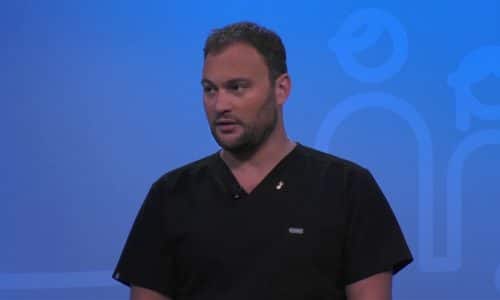Hernia Surgery: Evolution |
Dr. Michael Renfrow, General Surgeon with Baptist Health South Florida, says the classic approach of hernia surgery was an open approach, but now it is done by making an incision over the hernia, going down finding the hole, and closing it with stitches.
“They began with laparoscopic procedures in the 1990s and with three or four small incisions, you enter the abdomen with a camera, and you come in from below and repair the hernia from inside,” he points out.
Transcript
How do you repair some of these hernias understand their different techniques to do it you have like robotic surgery correct correct the classic approach was an open approach and that’s how it was done for years now would just be simply making an incision over the hernia going down finding the hole closing it with stitches and then at some point you decide whether or not to place a mesh now things have advanced in about twenty years ago they began with laparoscopic procedures in the 1990s and those three or four small incisions you enter the abdomen with a camera and you come in from below what’s called a perineal approach or a posterior approach and you come from underneath and you repair the hernia from inside you close the hole very similarly this principle is the same you close the hole and sometimes once again you decide whether or not to place a mesh now it’s gone in the last 5-10 years toward a robotic surgery and robotic surgery it’s very similar to laparoscopic surgery and that it’s the same three or four incisions just the technology’s advanced and instead of standing over the patient we actually stand at a console usually and typically in the same room and we control the trocars or the arms of with the robot with with a console and what it just increases the clarity it’s better visualization it gives you a 3d image it’s just the advancement of technology and and really we’re all future surgeries probably heading right Wow so you said you use cameras can you expand a little bit like how do you get a camera in there so when you when you make three or four little incisions or one of those incisions the camera will go through that incision and you can actually put the camera in whichever incision you like depending on what you’re trying to visualize and the camera these days are becoming more flexible higher definition so it’s really increased the visualization may the surgery safer decrease complications and it’s more than anything a tool I tell all my patients really a surgeon should know how to do the surgery in all three ways open laparoscopic robotic and tailor the approach to the patient because there is still certain patients who are better with an open approach without a doubt some better with a laparoscopic some better with robotic but it’s just a tool you have and then when it’s the best thing for the patient that’s how you should approach you








